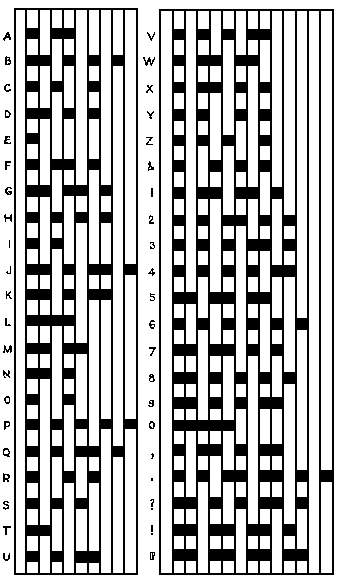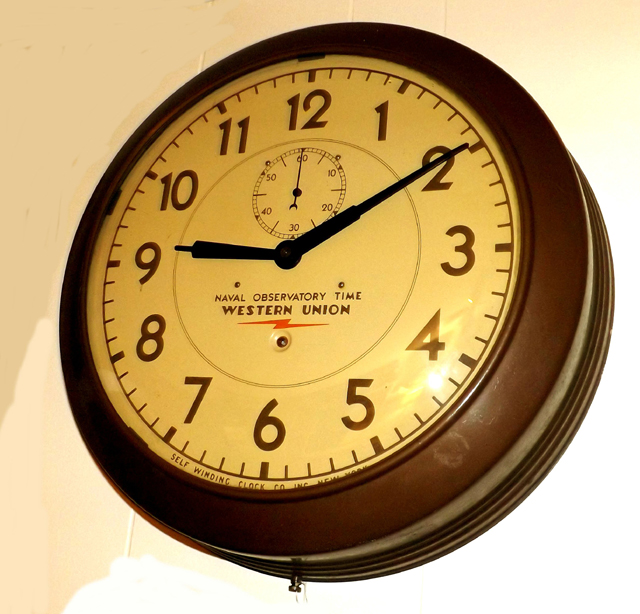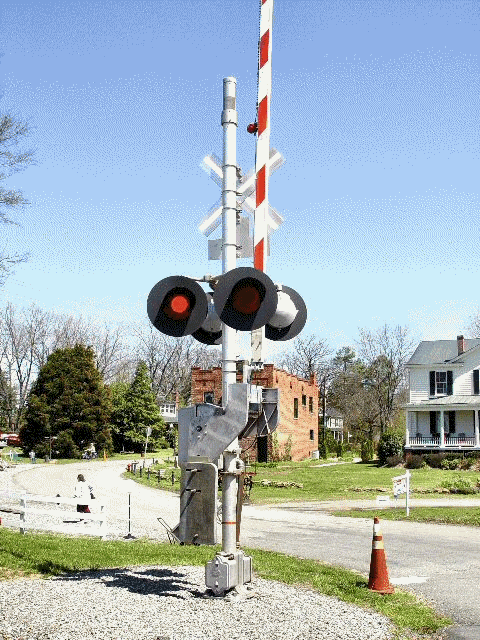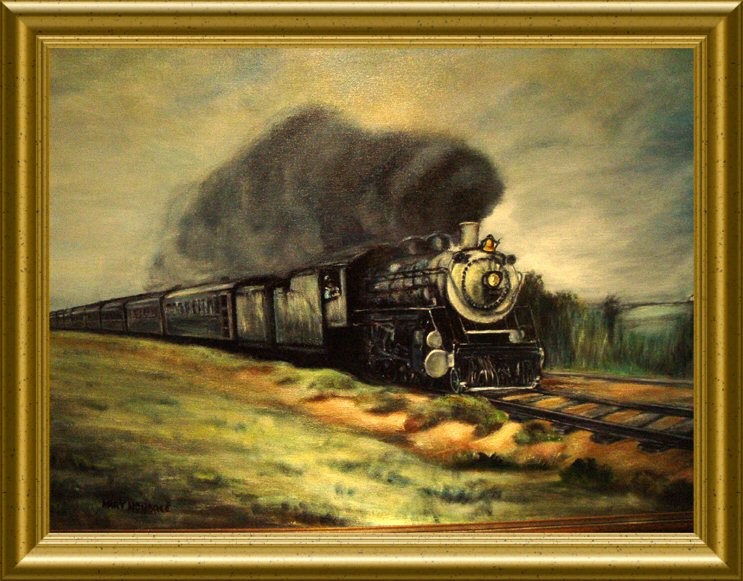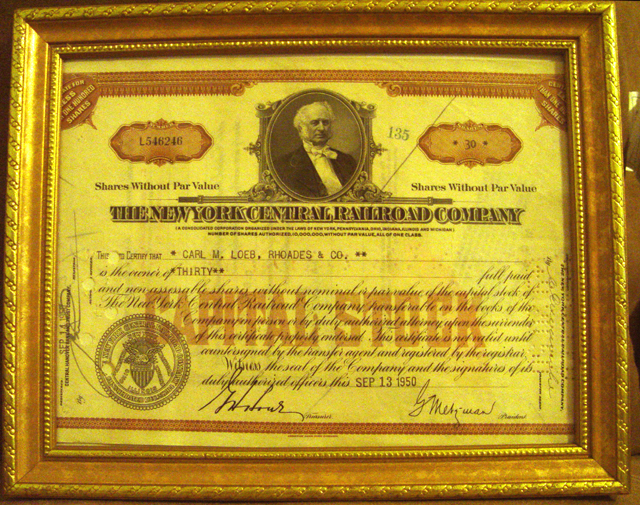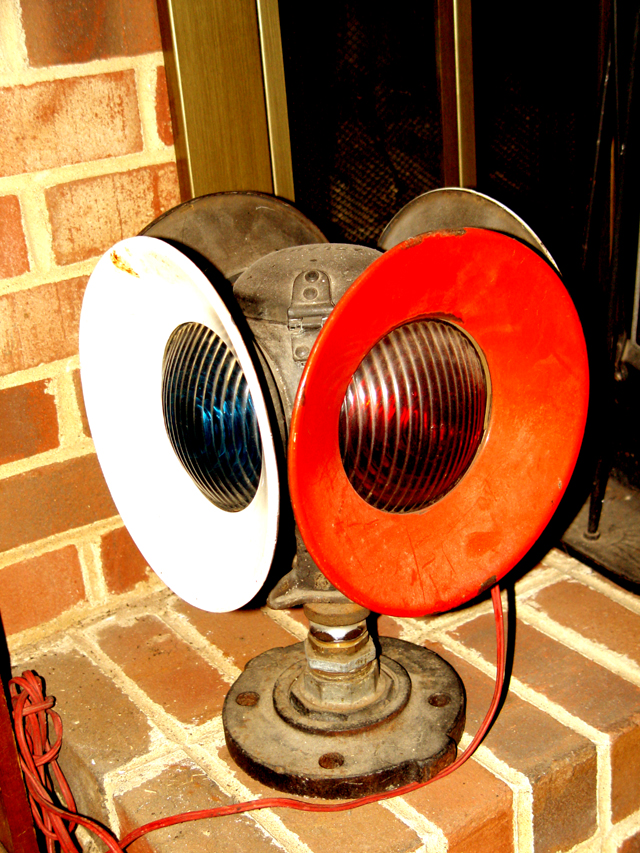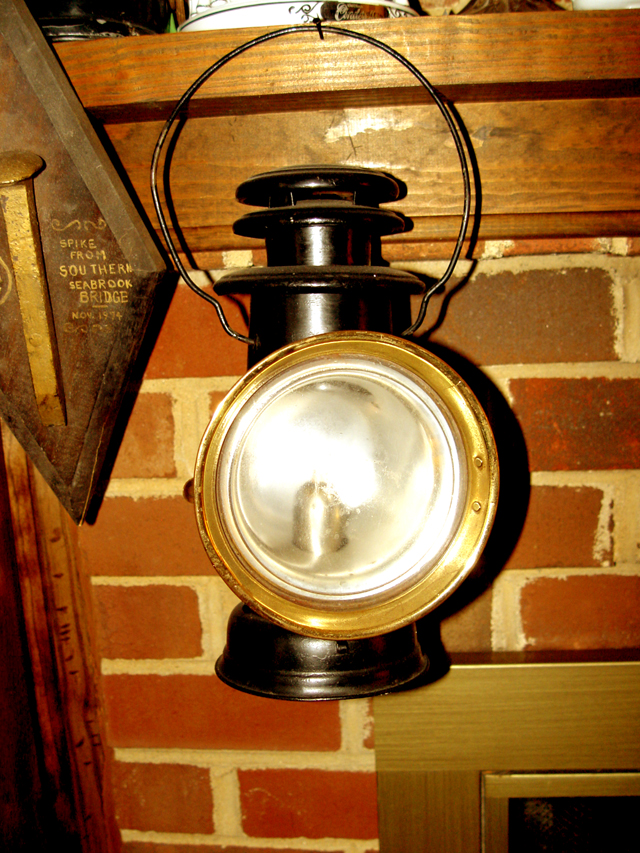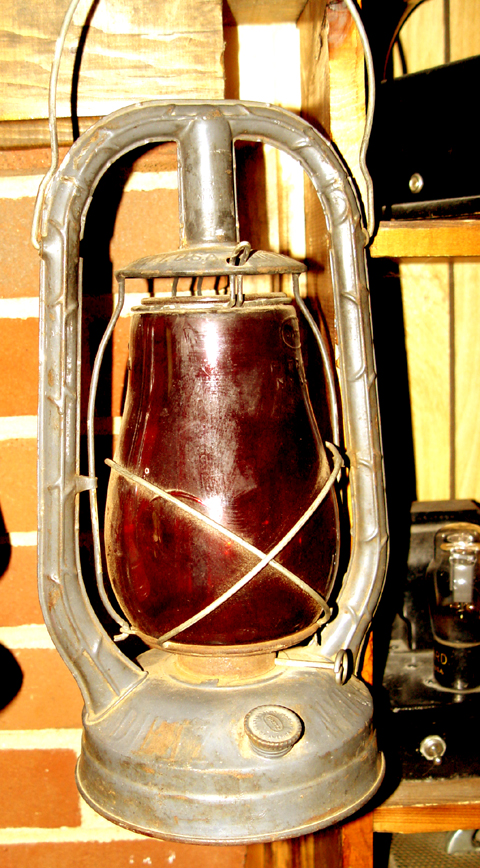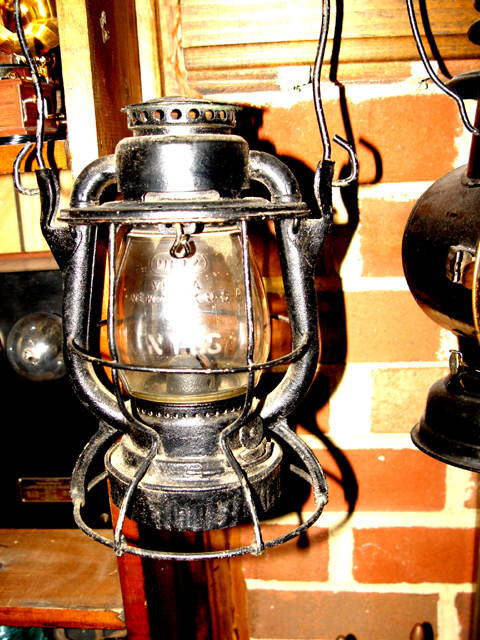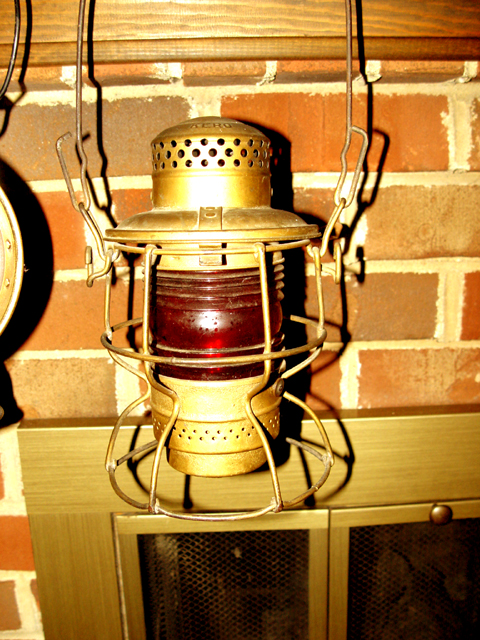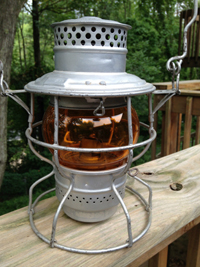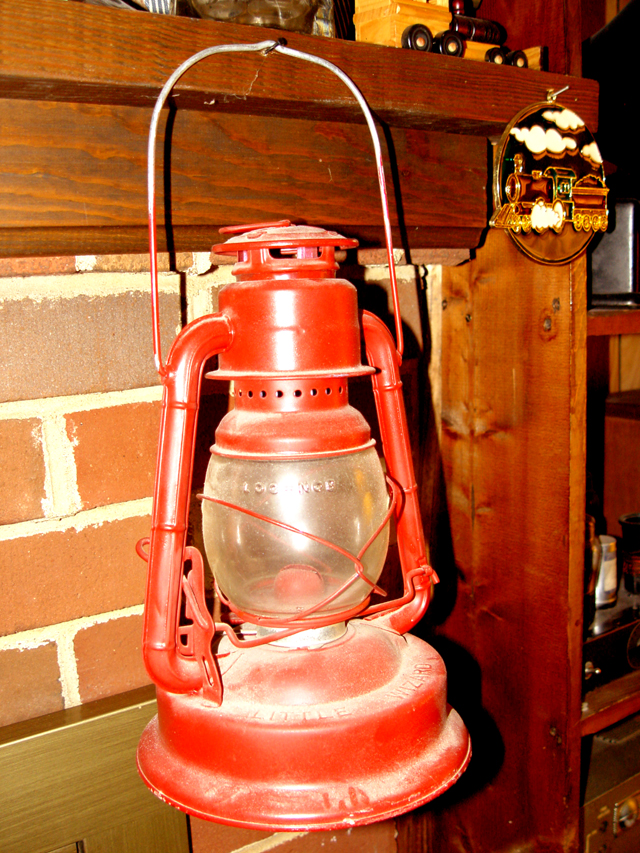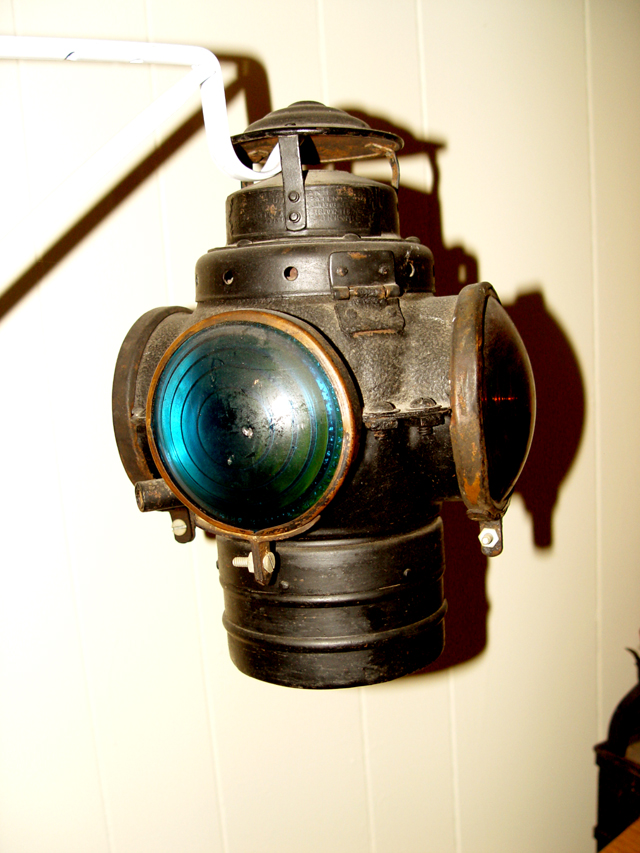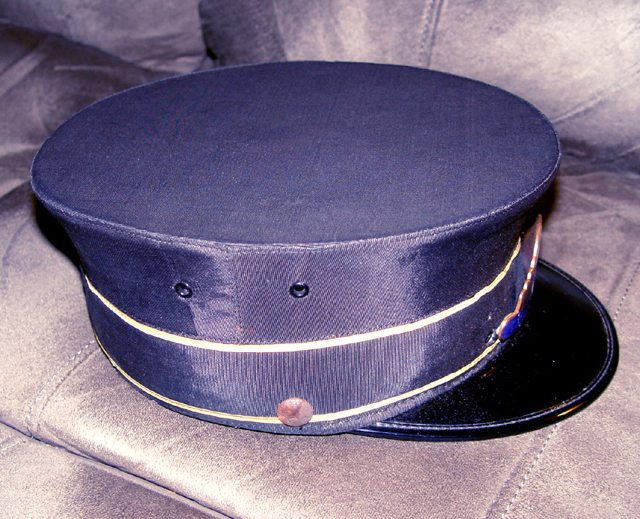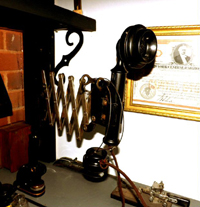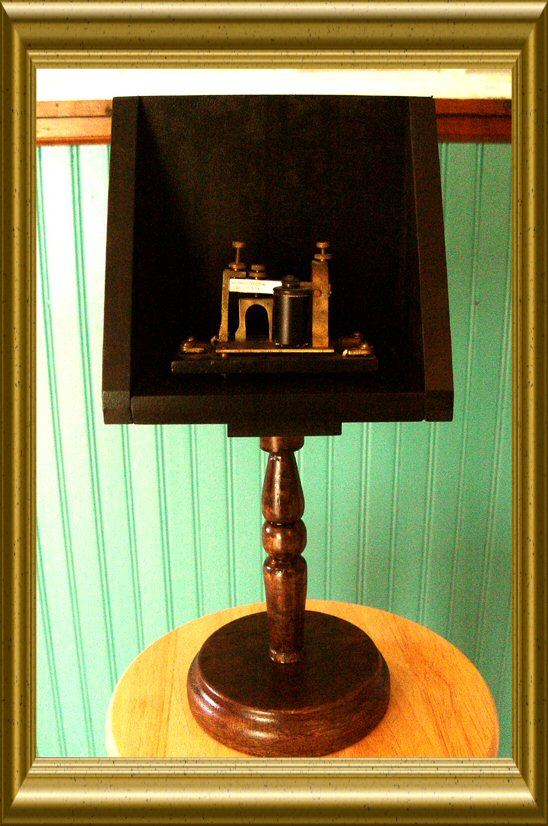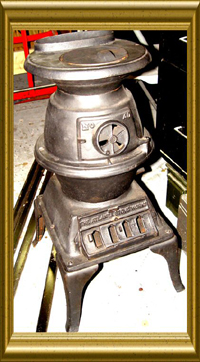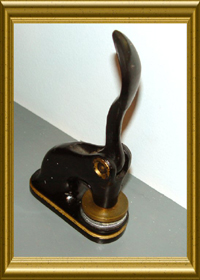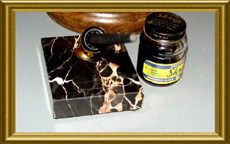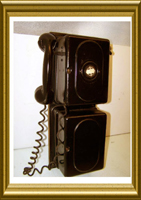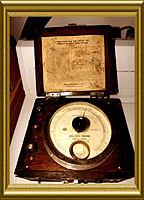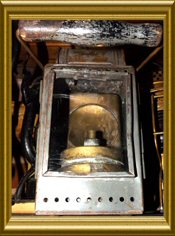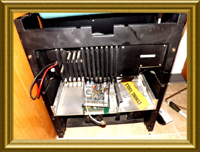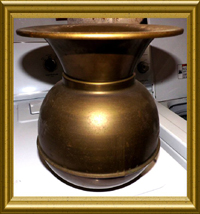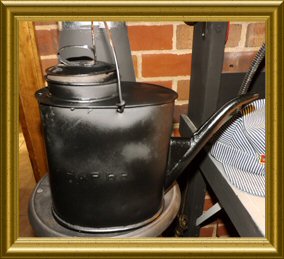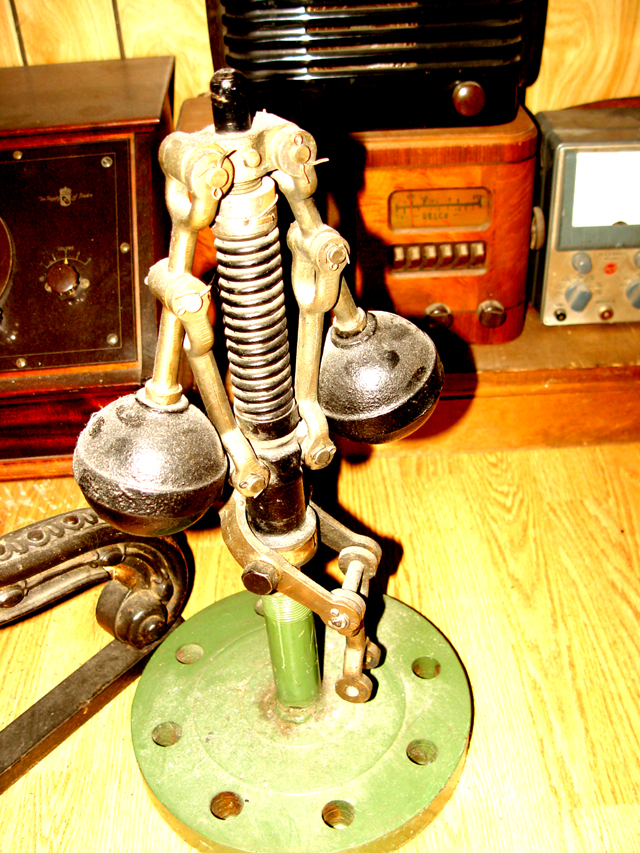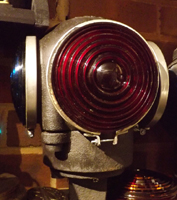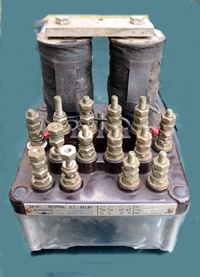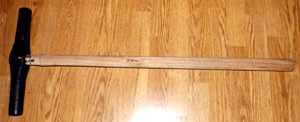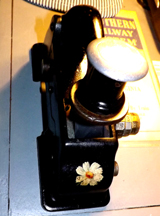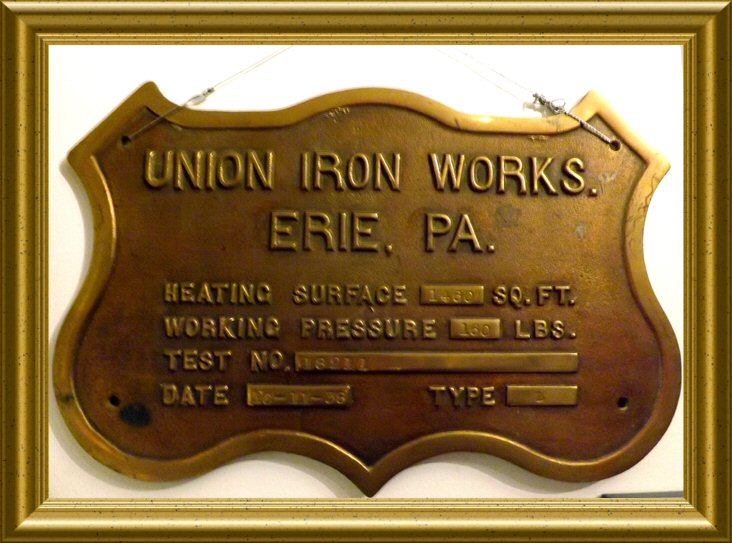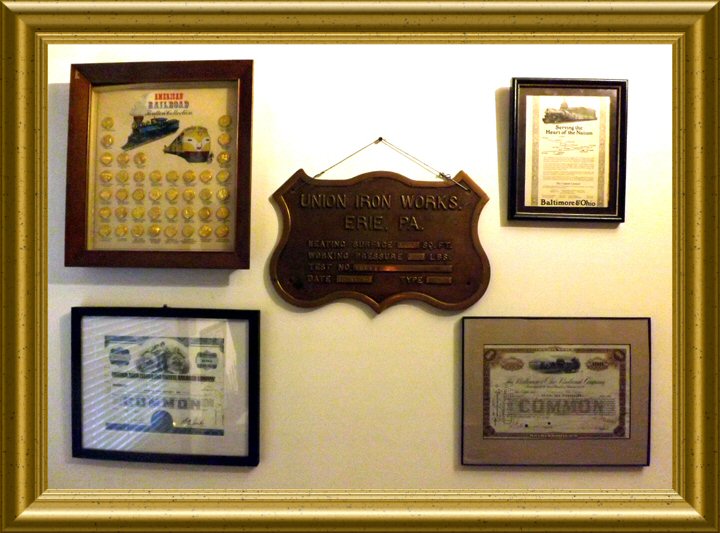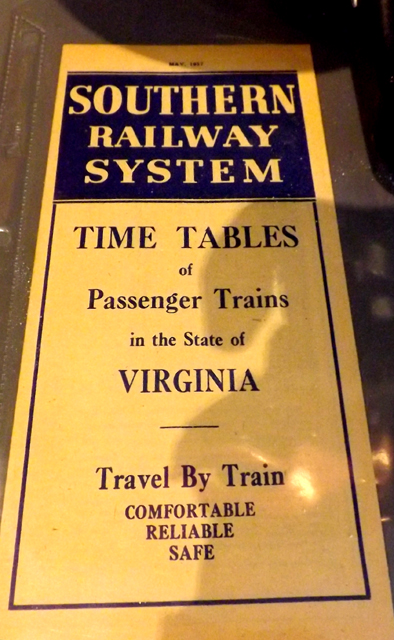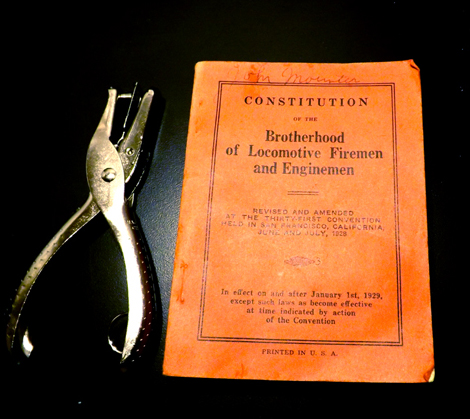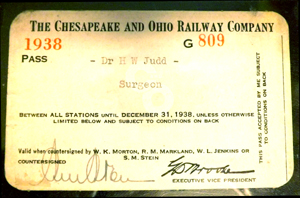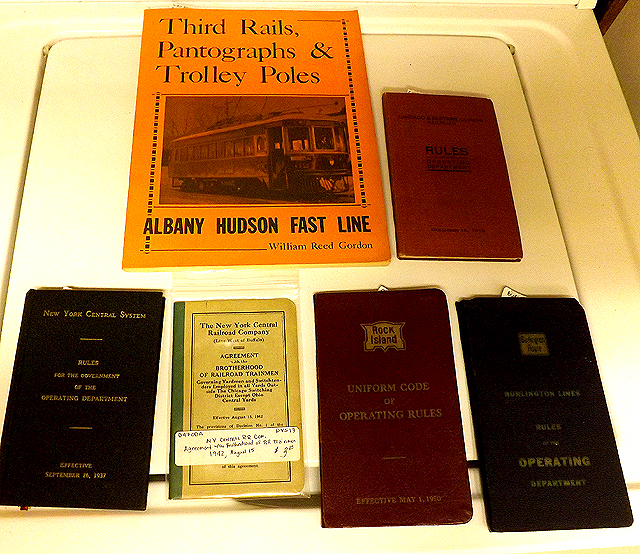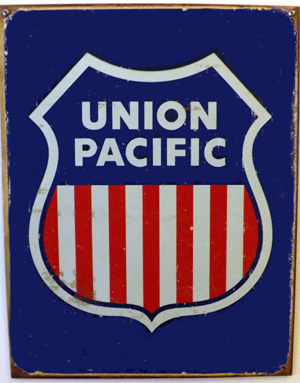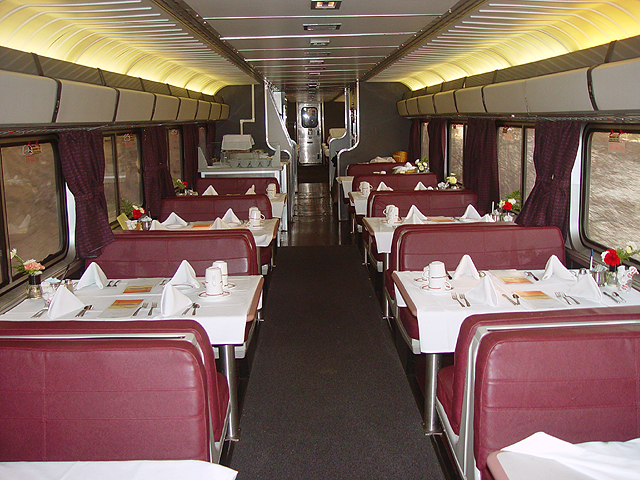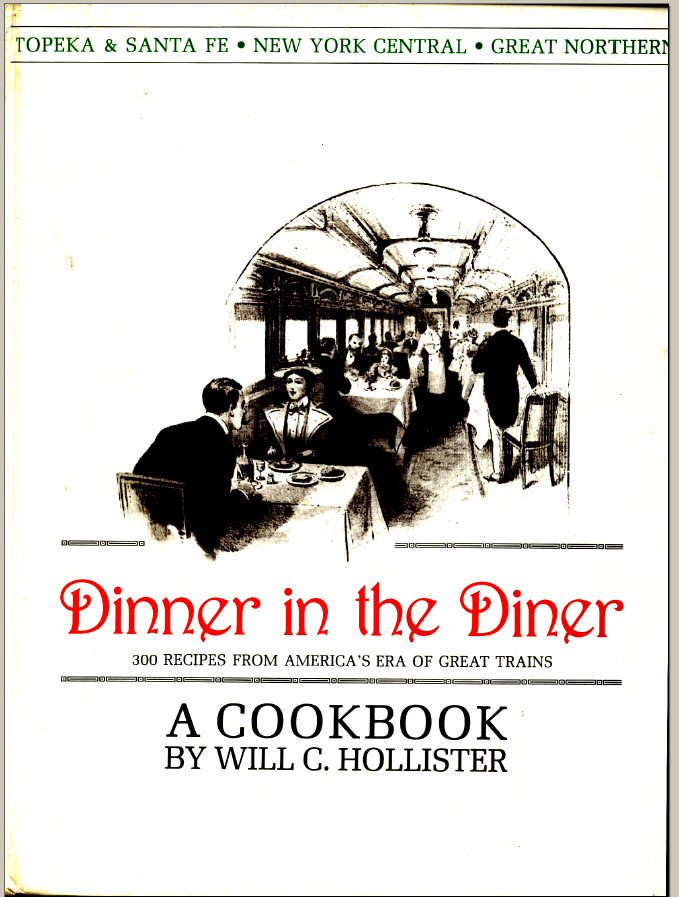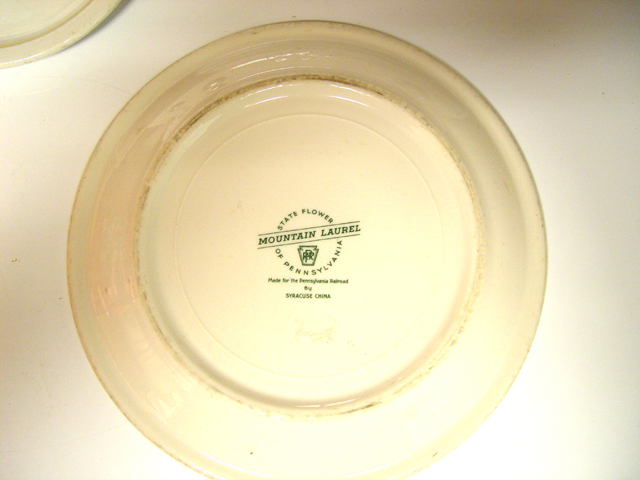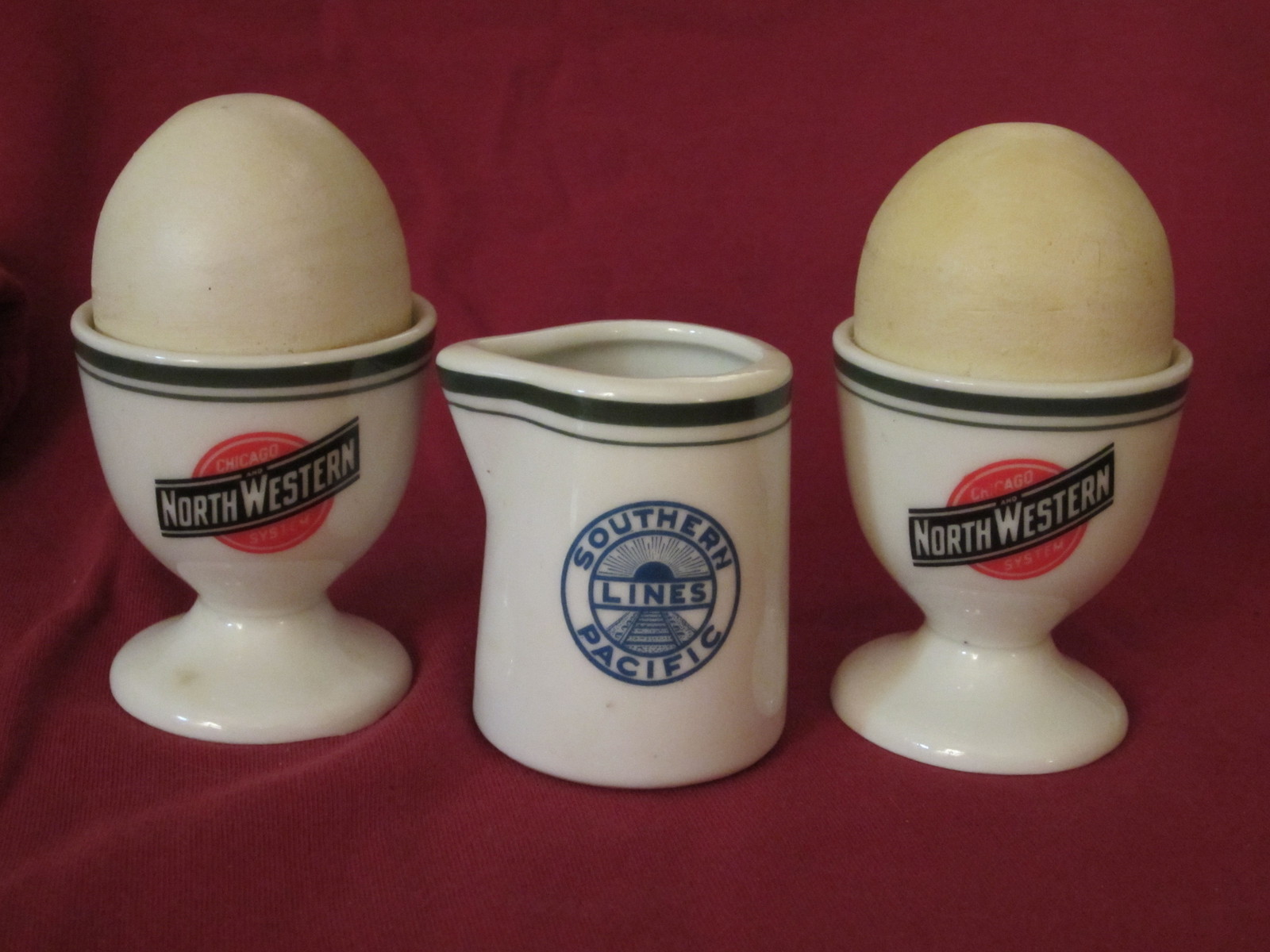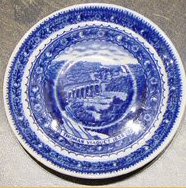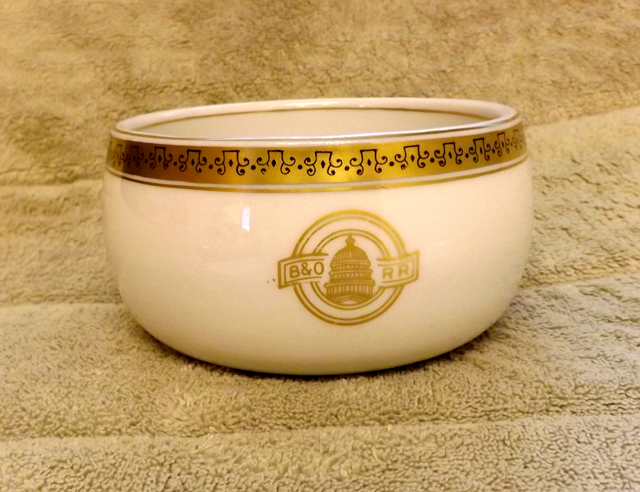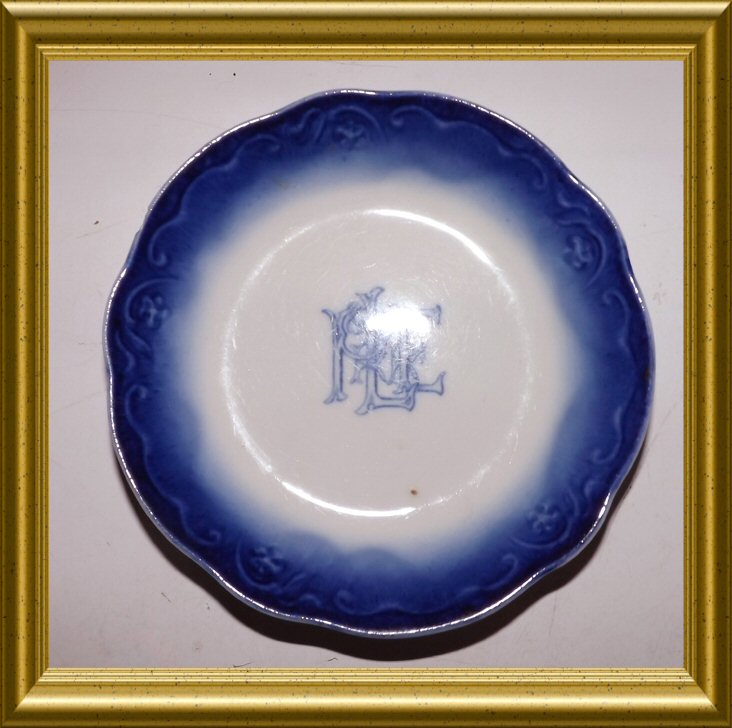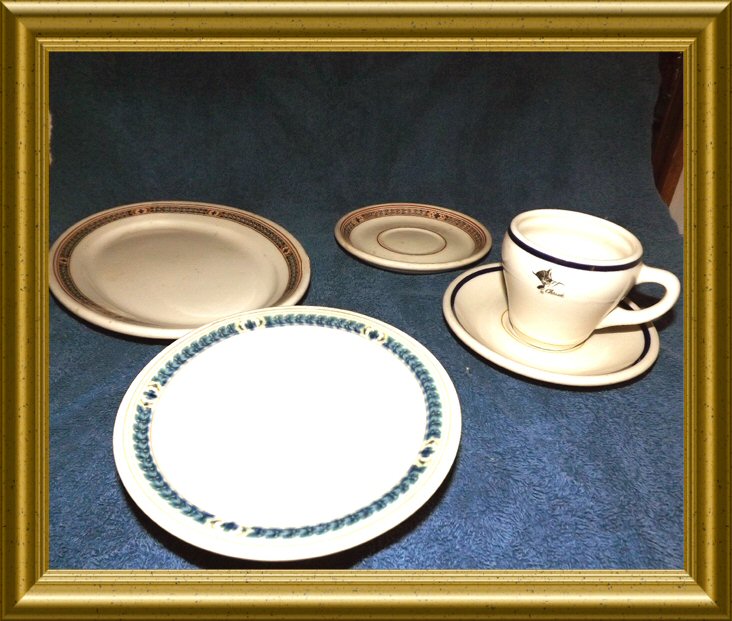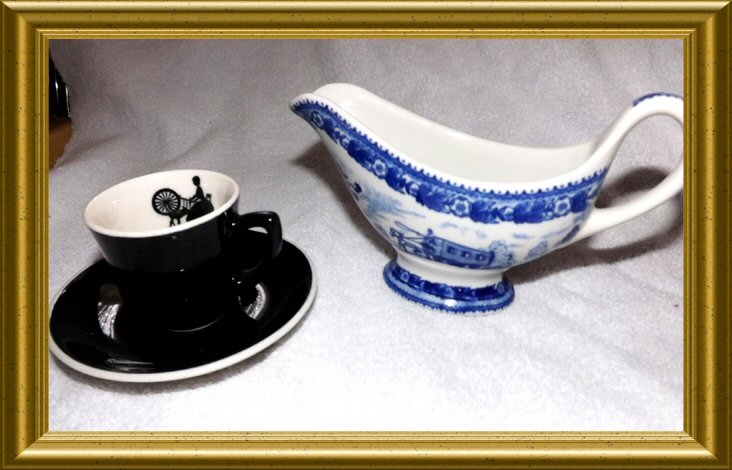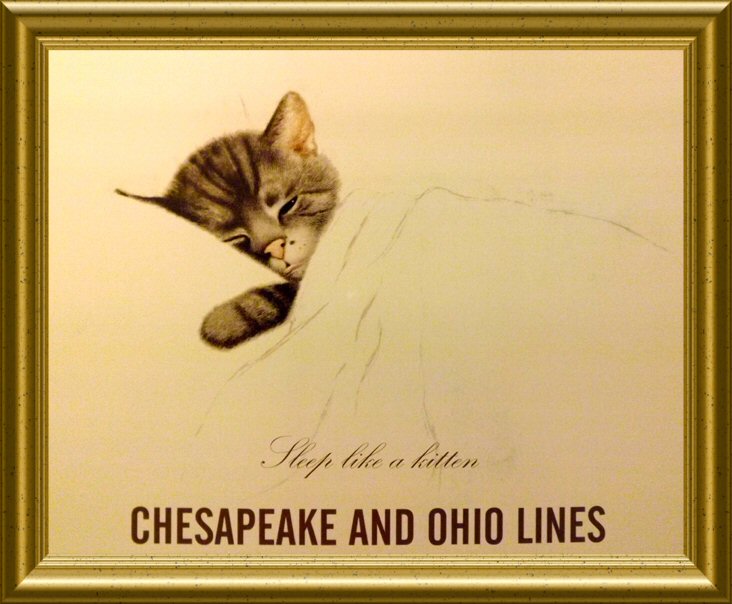MUSEUM OF YESTERDAY
Note: Click the image above to see an Amtrak passenger train at this crossing.
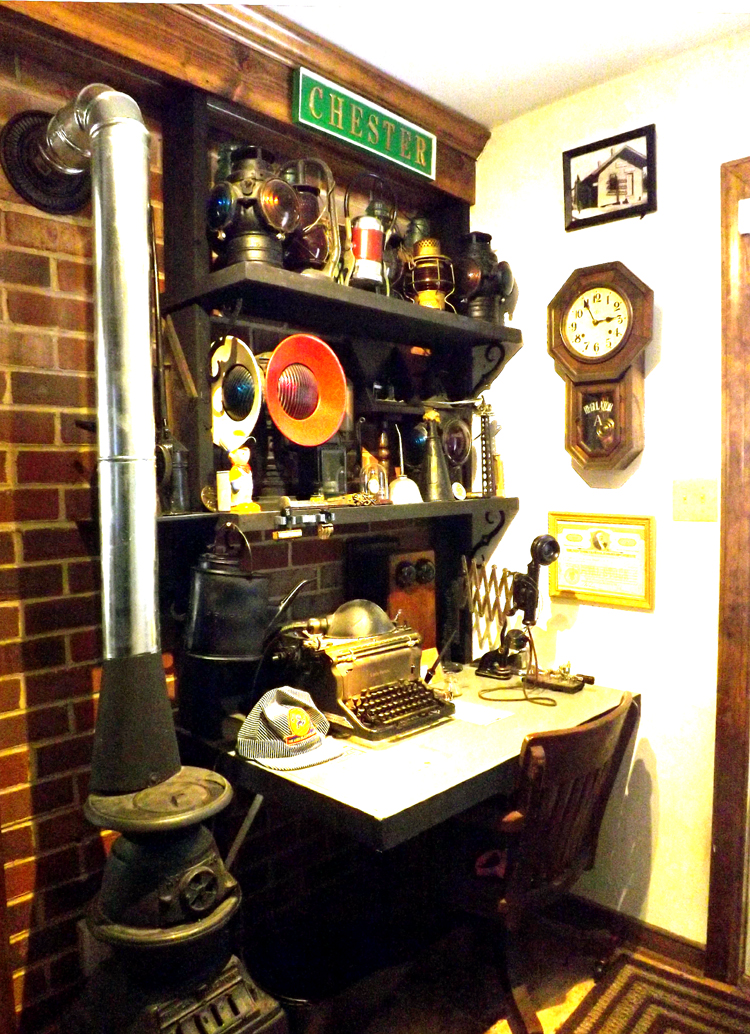
We have assembled an authentic turn-of-the-century railroad station master's office in the museum's railroad gallery. The office contains all of the tools, equipment and fixtures that would be found in a typical American small town railroad station. In most small stations, the station master on-duty served as the ticket agent, the Railway Express shipping clerk, the Western Union telegraph operator and the local train dispatcher.
Below: An early photo of the New Orleans district office of the Southern Pacific Railroad (ca: 1905).
The clerk sitting at the desk is John R. Nicolini, great uncle of Museum Of Yesterday chairman John DeMajo.
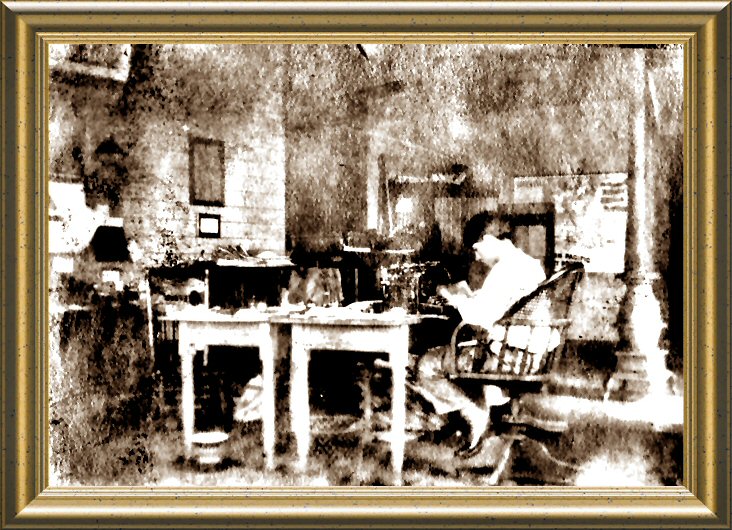
Some items from the museum's equipment collection: Click photos below to see full-size view
RAILROAD MAINTENANCE TOOLS
The Museum Of Yesterday has undertaken a project to develop and grow our collection of railroad construction and track maintenance tools. We have recently acquired a small collection of track tools, and have begun to photograph them into this virtual presentation of our collection.
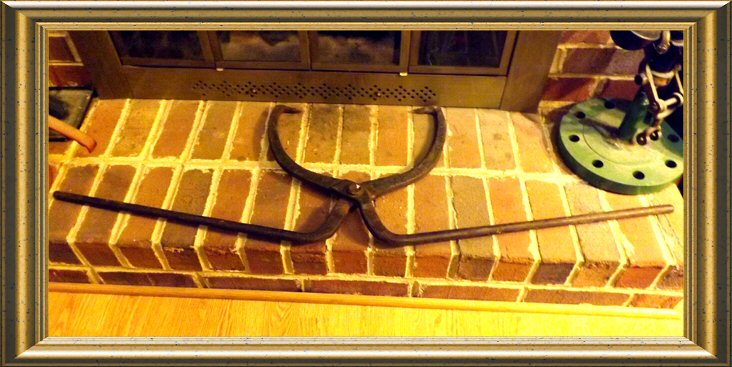

Photo courtesy of Wikipedia
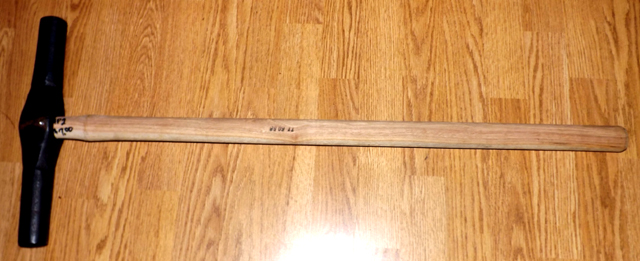
A spike mall used to secure railroad track to the ties that support them
Click on image above to see demonstration of the use of this tool.
Several different lenses were in use in kerosene lanterns used on the railroads before the advent of electrical signaling. The following table lists the various lenses that were in common use, and their purpose or message. In the pre-electric signal era, switching towers were required to keep three oil lamps burning at all times after dark. The specified lamp colors were red, clear and yellow.
Blue Lantern- Signaled that a train was being worked on.
Red Lantern- Indicated the rear end of a train, and also signaled approaching trains to stop for orders or track obstruction.
Yellow Lantern- Used to cautiously wave a train passed an otherwise red signal.
Green Lantern- Used to flag a train to stop for passenger pick-up.
Clear Lantern- Simply used for illumination or hand signaling in the way that a flash light would be used today.
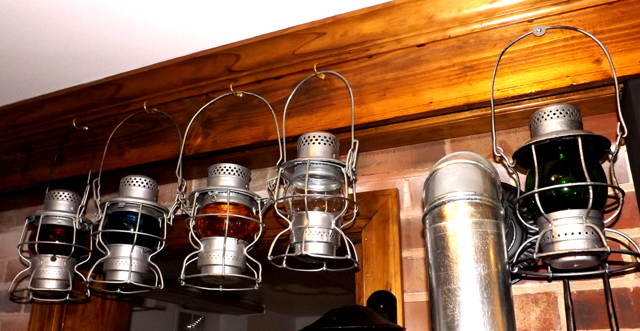
Click here to see a comprehensive primer on railroad signal use

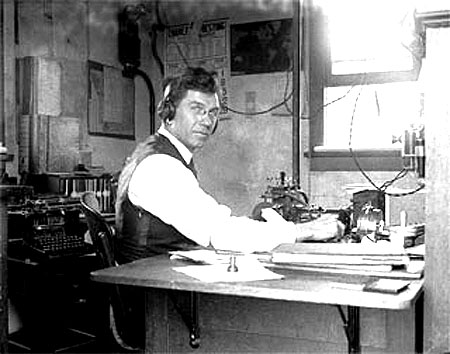
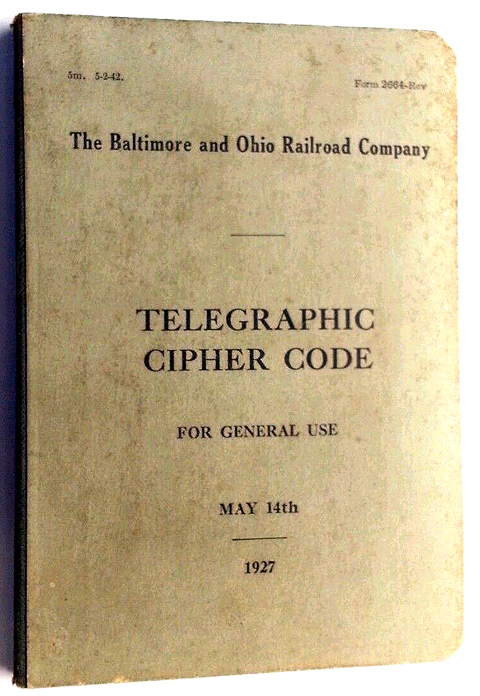
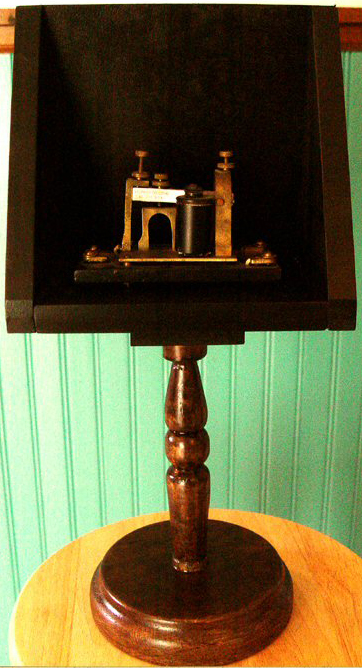 |
 This is an example of a railroad station telegraph sounder installed in an acoustic amplification box. This device would have been used in a railroad station office to act as the source of sound for incoming telegraph messages. While the sounder enclosures worked well to amplify the clicks of the telegraph sounder magnets, railroad employees quickly discovered that they could further accentuate the sound of the telegraph signals by inserting a specific type of empty pipe tobacco container next to the electro-magnetic sounder. |

